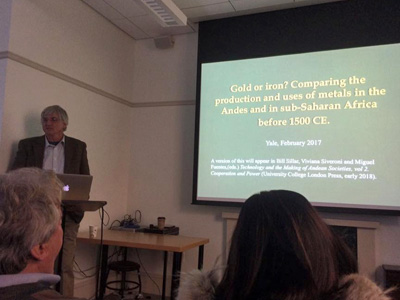
“Prehispanic metal production and uses in the Andes is compared here to that of sub-Saharan Africa (excluding the Nile Valley and Eritrea/northern Ethiopia) before 1500 CE. In the Andes, the focus was firmly on the uses of precious metals for display and ritual, beginning with the use of gold and silver during the Early Horizon (800-200 BCE). Copper smelting began in the early centuries CE, and elaborate technologies employing alloys of copper with gold, silver, arsenic, tin, and nickel were used to create ornaments for elites, and items for dedicatory caches and elite burials. But copper alloys were seldom used in agriculture or warfare, and iron was never used. Metallurgy in sub-Saharan Africa was, from its beginnings (probably in the first millennium BCE) squarely focused on the production of iron for use in agriculture. Unalloyed copper was used for simple personal ornaments, but gold, silver, lead, tin, and bronze were not produced in this vast subcontinent before long-distance trade with the Muslim world began from the 8th century CE. The scale of metal production in Prehispanic South America appears very small when compared to that in sub-Saharan Africa. I suggest that the striking differences in the production and uses of metals in these two subcontinents are explained by fundamental differences in the economic, social, and religious roles of metals in each region over the longue durée and also by the timing of the emergence of complex societies in these two regions.”